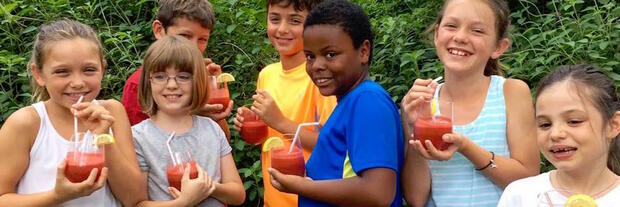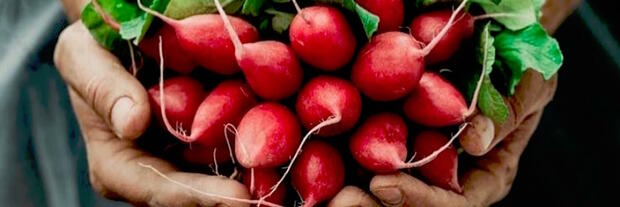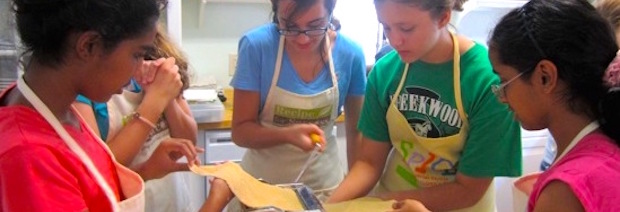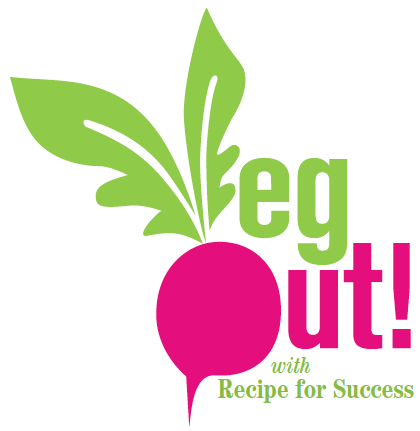 Tom Wolf is all over the map...literally. From Texas to the Tropics, Tom spends his days capturing slices of life, whether that is architecture, travel, events or food. His photography philosophy focuses on the journey, striving to appreciate all the experiences along the way, as opposed to only enjoying the destination.
Tom Wolf is all over the map...literally. From Texas to the Tropics, Tom spends his days capturing slices of life, whether that is architecture, travel, events or food. His photography philosophy focuses on the journey, striving to appreciate all the experiences along the way, as opposed to only enjoying the destination.
So how did Tom, a photographer for over 35 years, get involved with Recipe for Success?
A vegetarian for 28 years, Tom enjoys local food that has been prepared with care. He has been eating this way for many years and he wants to pass on this mindset and lifestyle of eating and living well to children at a young age.
After meeting an RFS staff member at a local farmers market, Tom and his wife began volunteering for the Seed-to-Plate Nutrition Education and helped in the classrooms with food preparation and cooking. Soon after, Tom proposed a photo documentary of the seed to plate process, documenting the school garden as the S2P students nurture, harvest and prepare their garden fresh food. "Over the course of four months, I observed the Rodriguez Elementary students and their garden in all phases, developing a strong relationship with the students as they became more and more involved with the project, voicing their opinions and even trying their hand at my camera," said Tom.
Combining his professional photography skills with his lifelong love of fresh and healthy foods, Tom was able to capture the very essence of the S2P program.
When Tom is not wielding a camera, he can be found listening to live music, traveling, eating or a indulging in a delightful combination of all three.
August 2012 Archives
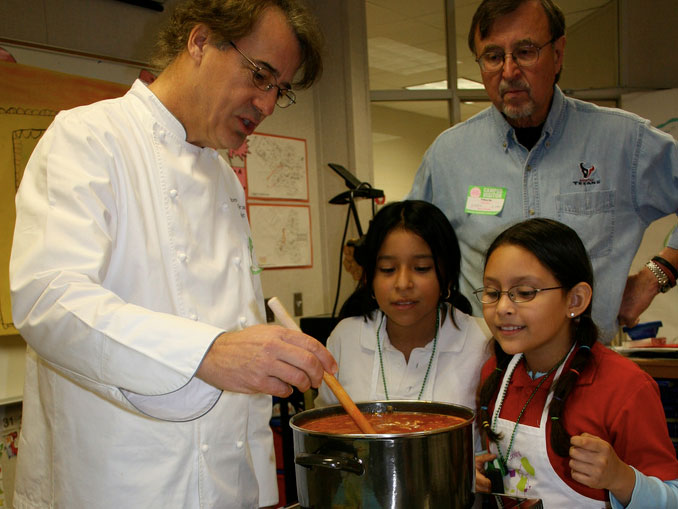 The French eat a greater diversity of fresh food, but less of it. French school lunches feature items like beet salad, butter beans, grated carrot salad, cauliflower casserole, endive and even escargots. Vending machines are banned at school and beverages are limited to water. France has a soda tax on all soft drinks and advertisements for junk food carry a health warning.
The French eat a greater diversity of fresh food, but less of it. French school lunches feature items like beet salad, butter beans, grated carrot salad, cauliflower casserole, endive and even escargots. Vending machines are banned at school and beverages are limited to water. France has a soda tax on all soft drinks and advertisements for junk food carry a health warning.Read more in this editorial which recently appeared in the British newspaper, The Guardian. It reviews many policies that have been discussed at length in the United States but never enacted. What do you think? Will it take heavy government intervention to turn this epidemic around?
 Although parents aren't usually in the cafeteria when little Johnny or Jill opens the lunchbox or goes through the line, we think it's a good idea for parent's to get into their heads.
Although parents aren't usually in the cafeteria when little Johnny or Jill opens the lunchbox or goes through the line, we think it's a good idea for parent's to get into their heads.
Lunchbox prep is only one piece of the nutrition pie. As the kiddos head off to school, a parent's role expands to teacher, educator and nutritionist. Arm your children with dietary knowledge to go along with that fresh and healthy lunch you packed. You don't need a degree in nutrition to nudge your kids toward making healthier food choices and discourage their swapping your homemade kale chips for those tempting french fries.
Try a few of these simple ideas to get started:
· Eat family meals together around the dinner table
· Always include a favorite food on the plate along with new items
· Invite your child to grocery shop and cook with you
· Make it a point to avoid processed foods whenever possible
· Set a good example with your own food choices
· Discuss school lunch ideas in advance
We understand that your biggest challenges are time and money. By planning ahead--discussing recipes, grocery lists, school lunch options--both parents and children are more likely to engage in and enjoy healthier, happier meals.
Who knows? At some point your child may be the one leading the culinary adventure. "I cook a lot at home with my mom, so this program has helped me to be a better helper at home in the kitchen," says one of our 5th grade students in the Seed-to-Plate Nutrition Education™ program at EA Jones Elementary.
What if your children are complaining about the changes new healthy guidelines have wrought in theschool cafeteria? Try making school lunch a part of your dinner table conversation. Ask about your child's favorite flavors and dishes in the lunchroom, and explore what he doesn't like or won't try. Then try to incorporate those dishes she is hesitant about into your own meals. Sometimes it takes as many as 15 exposures before you break through that refusenik barrier!
Support the healthier choices now available in school cafeterias and encourage your child to try new things--one taste isnt that hard to stomach. And remember, whatever your own experience with school lunch "in the day," comiserating will not move the needle in the right direction!
So, this year, in addition to those extra servings of whole grains, fresh fruits and veggies, add a few slices of healthy discussion and food knowledge into your child's lunch routine.
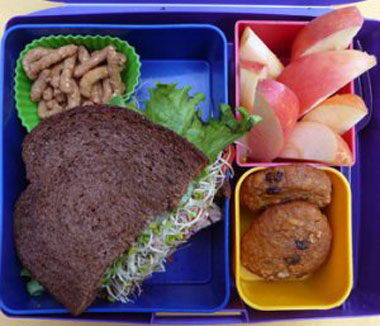 How do you define school supplies?
How do you define school supplies?
Of course there are the ubiquitous backpacks, pencils, crayons, rulers, scissors and all the other quintessential necessities for the classroom.
But what if we expand the accepted definition of "school supplies" to include what children tote around in their lunch boxes? The lunchroom is just as much of an educational setting as the classroom and the lunchbox is a powerful tool that can either help or hinder your little one's lunchtime experience.
How do you achieve optimal lunchbox success? Here a few tips to help you get started.
· Choose brightly colored fruits and veggies to create a visually pleasing plate
· Make sure all food is kid-friendly size so it is easy and fun to eat
· It's not all about the food; packaging can be just as important! Check out the new bento box lunchboxes for kids (and adults); brightly colored and differing in sizes so as to help with portion control
· Step out of the box when it comes to the ever-present sandwich; use cookie cutters for fun shapes or just scratch the sandwich entirely and try meat and cheese roll ups!
· Have your children help you pack the lunchbox; the more your children participate in food preparation, the more likely they will be to eat what is in their lunchbox
Your colorful, creative and (hopefully) collaborative lunchbox will make your child the star of the lunchroom. Gone are the days of trading mushy bananas for a shrink-wrapped twinkie.
"The kids are loving this program! I know they are cooking the recipes at home because they come back to school the next day and tell me about it!!" says a 5th grade teacher at EA Jones Elementary
Recipe for Success' integrative Seed-to-Plate Nutrition EducationÔ teaches kid-friendly recipes, easily adapted for the dinner plate or the lunch box.
Make your child's lunchbox "lunchroom ready" with the following Recipe for Success recipe.
A Recipe for Success: Paprika Cauliflower Pita Pockets
Serves 4
Ingredients:
1 head fresh cauliflower (2 pounds), cut into bite-size florets
3 tablespoons olive oil
2 tablespoons sweet Hungarian paprika
½ teaspoon ground black pepper
½ teaspoon fine sea salt
1 medium red onion, diced to = 1 cup
1 clove garlic, minced
½ cup low-sodium vegetable broth
2 tablespoons lemon juice
4 pita bread rounds, halved and warmed
Process:
Assemble and measure all your ingredients to create a mise en place
1. Using a saucepan with steamer insert set over high heat, add cauliflower, cover and steam for 7 to 9 minutes, or until fork tender.
2. Remove cauliflower to a colander or strainer and set aside to drain.
3. While cauliflower is cooking, set a non-stick skillet over medium low heat.
4. Add olive oil, paprika, pepper, and salt to the skillet and sauté, stirring constantly for 2 minutes, or until fragrant.
5. Add onion and garlic, to the skillet and sauté 2 minutes longer.
6. Stir in cooked cauliflower and broth to the skillet, and simmer 3 minutes.
7. Remove skillet from heat, and stir in lemon juice.
8. Allow to cool.
Serve inside pita halves for a nutritious lunch. Get Adventurous!
Get Adventurous!
· Try adding fresh tomatoes, chopped black olives, and some low-fat Parmesan cheese to the stuffed pita pockets.
· Experiment with using different seasonal vegetables in place of cauliflower.
· Add any leftover filling to a salad. It's just as good cold!
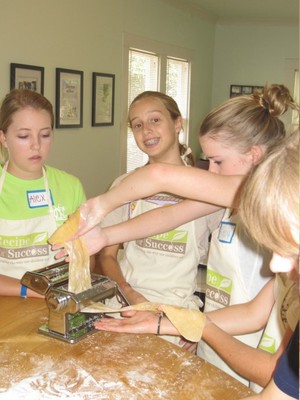 "Actions speak louder than words." An age-old adage that rings even more true when it involves the terminology that surrounds the contentious topic of childhood obesity. Stanford University's Scope Blog discusses the recently published reports that advise health professionals on how they should approach describing a child's obesity issue with the child and his or her parents.
"Actions speak louder than words." An age-old adage that rings even more true when it involves the terminology that surrounds the contentious topic of childhood obesity. Stanford University's Scope Blog discusses the recently published reports that advise health professionals on how they should approach describing a child's obesity issue with the child and his or her parents.With descriptors such as "fat, chubby, obese and overweight" labeled as too polarizing, Thomas Robinson, MD, Director of the Center for Healthy Weight at Lucile Packard Children's Hospital, urges health professionals to carefully choose more neutral descriptions and use them in the proper context, focusing more on how a child can handle the emotional struggles that sometimes coincide with obesity, and how they can work with his or her parents to achieve a healthier lifestyle.
While it is stirring that we as a society are sensitive to how we describe and discuss childhood obesity, there is a straightforward solution to the dialogue debacle: stop talking and start doing!
Involving children in the food process, whether it's in the garden or in the kitchen, empowers them to make their own choices about what to put in their bodies. And when they are more closely involved in the harvesting and preparation of their meals, they will most likely be much more open-minded when it comes to trying new fresh and flavorful healthy foods.
The kids in our Seed-to-Plate Nutrition EducationTM program are masters of their own plate, as they dig in the garden and cook in the kitchen, harvesting their own fresh veggies to use in fresh, healthy, and most importantly, delicious dishes. "I've never really liked being outside or gardening, but since we started gardening with RFS, I realize it's pretty fun!" - Arial, 5th grade student at EA Jones Elementary
Kids (and teachers and parents too) are continually surprised at how much they enjoy and even prefer freshly prepared foods to junk food when they have had a hand in the preparation. So stop scrambling for euphemisms. Grab an apron and a spoon and get to cooking!
While the Recipe for Success Foundation team scrapes our knees to raise the money for our charitable work to turn back the clock on childhood obesity and the debilitating diseases it causes, the global investment community is gleefully anticipating the business opportunities this tragic pandemic lays at their feet.
A recent press release on a research report from Bank of America Merrill Lynch, Globesity--The Global Fight Against Obesity, tells investors:
"Increasing efforts to tackle obesity over the coming decades will form an important new investment theme for fund managers...Global obesity is a mega-investment theme for the next 25 years and beyond...The report...identifies that efforts to reduce obesity is a "megatrend" with a shelf-life of 25 to 50 years...BofA Merrill Lynch analysts across several sectors have collaborated to identify the sectors and companies developing long-term solutions.
Given the worldwide increase in obesity, its high prospective costs, and the ever-present threat of government regulation, the report identifies more than 50 global stocks that provide investment opportunities for fighting "globesity." These fall into four categories:
1. Pharmaceuticals and Health Care: companies taking advantage of the FDA's increased support for obesity drug development; tackling related medical conditions and needs including diabetes, kidney failure, hip and knee implants; making equipment such as patient lifts, bigger beds and wider ambulance doors.
2. Food: companies accessing the $663 billion "health and wellness" market and reformulating portfolios to respond to increasing pressure such as "fat taxes" to reduce sugar and fat levels.
3. Commercial Weight Loss, Diet Management and Nutrition: companies pursuing dieting, nutrition and behavioral change--a $4 billion market in the U.S. and growing globally.
4. Sports Apparel and Equipment: "This is the longer-term play, but we believe that promoting physical activity will become a key priority for more government health policies."
I don't know about you, but I am heartsick that the focus is on reaping financial rewards from this killing trend rather than combining all resources to bring it to an early end. We all know that the contributing factors to obesity are mulit-layered and some stem from changes to our built environment and hereditary issues, but most are a direct result of the high margin junk and processed food industry. So the very business investors who made billions helping create this problem now stand to profit the most from "solving" it.
It's only 8:00 a.m., but I may be forced to have a drink.



